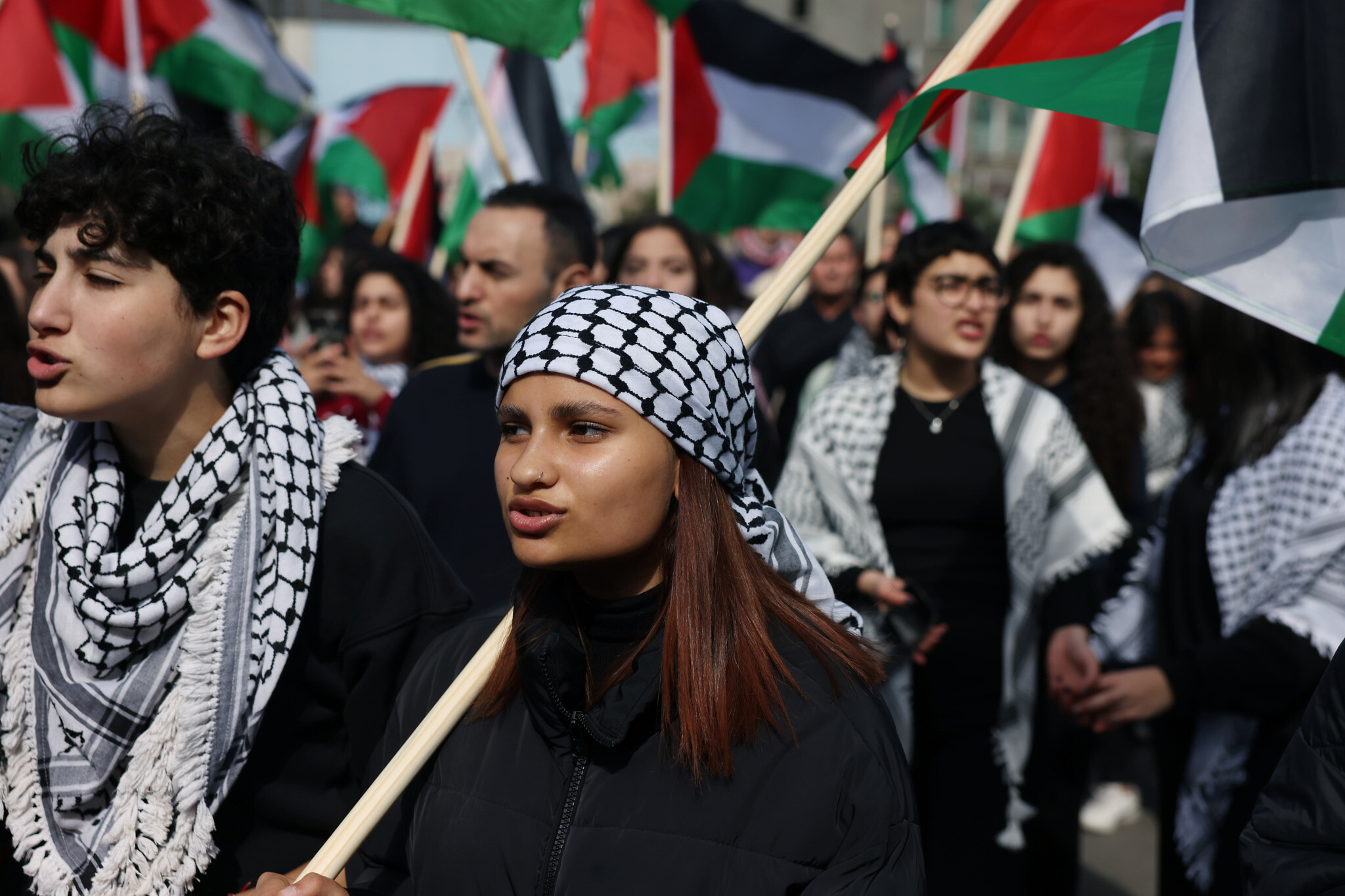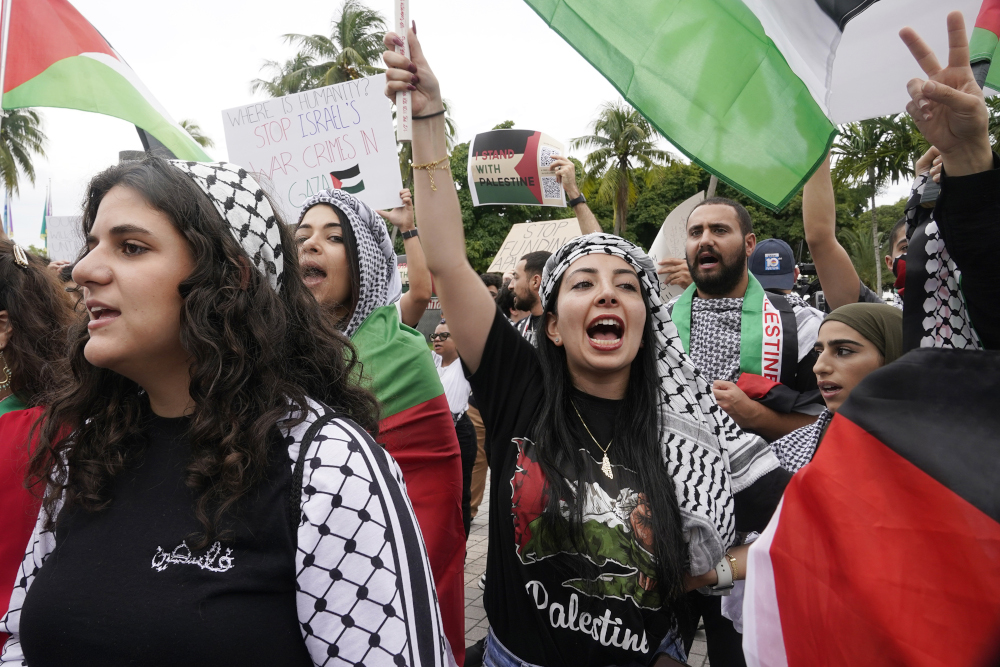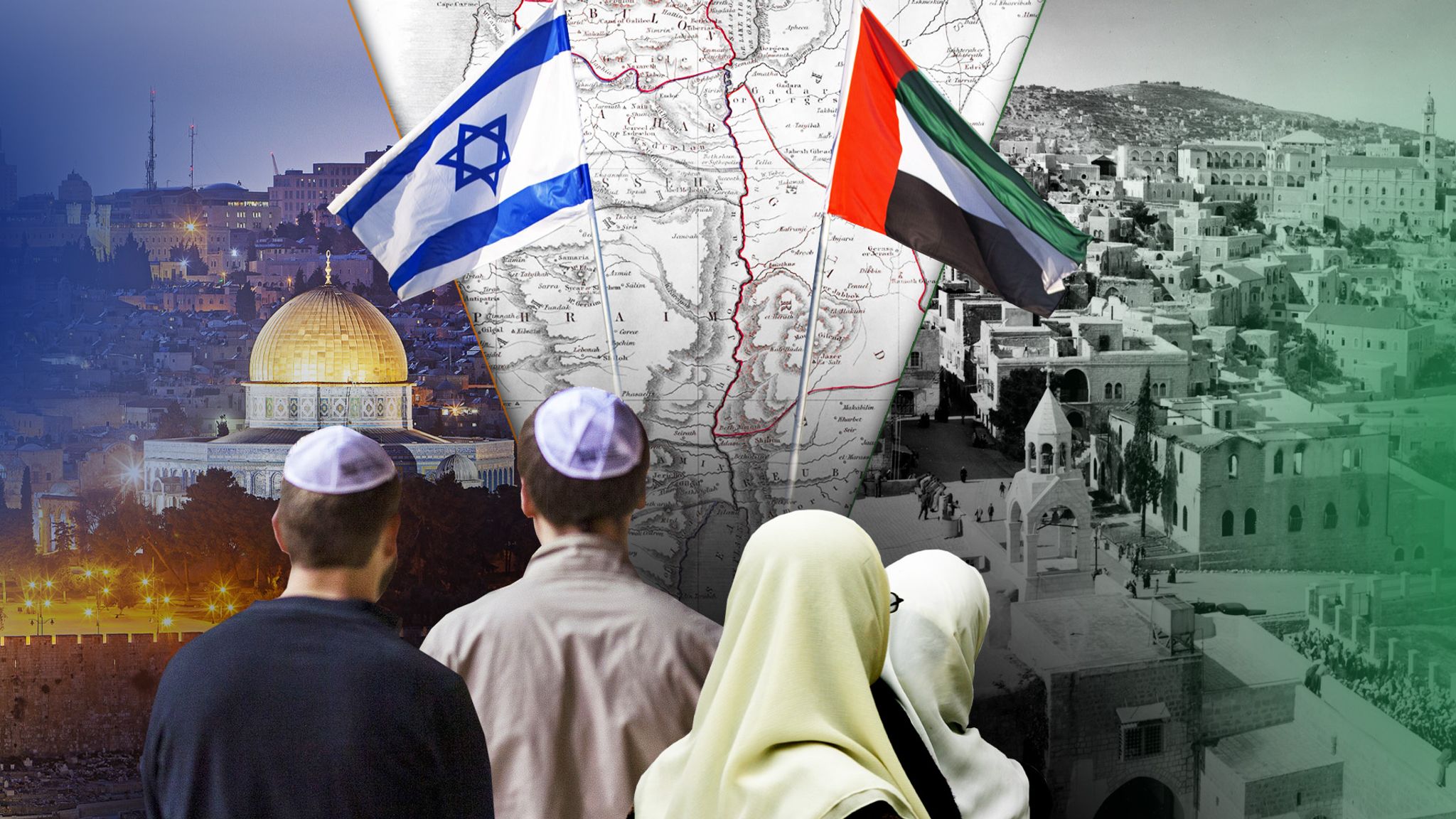When you think about art, it's often a way to truly see a culture, isn't that right? It's like stepping into a different world, getting a sense of what matters to people, what they hold dear. This is very true for Palestinian art, which tells a deep, ongoing story of a people and their connection to a special place. It offers a glimpse into lives lived, histories remembered, and hopes kept alive, more or less. This particular form of expression is a powerful way for voices to be heard, for traditions to be shared, and for a very unique identity to be seen by everyone.
For many, the idea of Palestine brings up thoughts of a certain geographical area in the Middle East, a place with a long, long history. It’s a region that includes parts of modern Israel, the Gaza Strip along the coast, and the West Bank, as a matter of fact. The Palestinian people are Arabs who have lived in this area for a very long time, through all of history, you know. Their art, then, is deeply tied to this land and its people's experiences, reflecting their resilience and their way of life.
So, what makes Palestinian art so special, and why is it something worth spending time on today? It’s more than just pretty pictures; it’s a form of cultural memory, a way to keep traditions alive and to share important messages. It’s a bit like a living record, honestly, showing the heart of Palestinian life through things like olive trees, the children of Jerusalem, and traditional dress. We'll look at how this art, especially the works of people like Sliman Mansour, really captures the spirit of Palestine.
- Hope Ann
- %D9%85%D8%AE%D8%A7 %D8%A8%D8%B1%D8%A7%D8%AA %D9%85%D8%A7
- The Kelly Birmingham
- Cakes Of Paradise Bakery
- Helga Lovekaty
Table of Contents
- What Is Palestinian Art?
- The Threads of History: How Palestinian Art Came to Be
- Sliman Mansour: A Look at His Life and Work
- Common Themes and Symbols in Palestinian Art
- Bringing Palestinian Art Into Your Space
- Frequently Asked Questions About Palestinian Art
What Is Palestinian Art?
Palestinian art is a broad term, you know, covering a whole range of creative expressions from people who identify as Palestinian. This art comes from those Arab nationals who, until 1947, usually lived in Palestine, a certain geographical region in the eastern Mediterranean. It’s not just one style or one type of work; it includes paintings, sculptures, textiles, and even performance pieces. What ties it all together, generally speaking, is its connection to the Palestinian experience, culture, and history.
The art often shows the daily lives of people, their struggles, their hopes, and their very strong ties to the land. It is, in a way, a visual record of a people’s journey, reflecting their past and their present. You’ll find pieces that speak about memory, displacement, identity, and the simple beauty of everyday life in Palestine. It’s a powerful way to communicate feelings and ideas, honestly.
The Threads of History: How Palestinian Art Came to Be
Early Roots and Cultural Ties
The roots of Palestinian art go way back, drawing from a rich history of craftsmanship and visual storytelling in the region. Before the more formal art movements, there were traditional crafts, things like pottery, weaving, and, very famously, embroidery. These crafts weren’t just decorative; they carried deep cultural meanings and were passed down through generations. They were, in some respects, the first forms of Palestinian art, telling stories through patterns and colors.
These early forms of expression were tied closely to family life and community, you know. They reflected the natural surroundings and the simple rhythms of life. The patterns in a piece of embroidery, for example, could tell you where a person was from or what their family history was like. It’s a kind of visual language, really, that has been around for a very long time.
Art as a Voice for the Palestinian National Movement
As the Palestinian national movement began to take shape and gain international recognition, thanks to various efforts, art also changed. It became a powerful tool for expressing identity and telling the story of the Palestinian people to the world. The movement itself regrouped in places like the West Bank and Gaza, and in refugee camps in neighboring Arab states, you know, and this experience deeply influenced the artists.
Artists started using their work to reflect the collective experience, to show the resilience of a people facing big challenges. It was a way to keep the culture alive, to remember what was important, and to speak about the future. This period saw art become more overtly political, but always with a strong connection to cultural heritage. It’s a very important part of how the world came to understand the Palestinian narrative.
Sliman Mansour: A Look at His Life and Work
When we talk about Palestinian art, one name that often comes up is Sliman Mansour. He is a truly renowned artist whose work has captured the life and spirit of Palestine and its people for decades. His art is a central part of understanding this cultural expression, honestly, and it shows the heart of Palestinian life in a very moving way.
Mansour's work often features subjects that are instantly recognizable as Palestinian, like olive trees, the children of Jerusalem, and traditional Palestinian dress. He uses these elements to tell stories that are both personal and universal. His pieces are not just pictures; they are narratives, full of feeling and meaning. He is, in a way, a visual storyteller for his people.
Artist Profile: Sliman Mansour
Sliman Mansour is a central figure in contemporary Palestinian art. His work has been widely recognized for its ability to convey deep emotion and cultural significance. He is, very simply, an artist who has dedicated his life to expressing the Palestinian experience through his unique style. Here is a bit about him:
| Name | Sliman Mansour |
| Profession | Artist (Painter, Printmaker) |
| Known For | Capturing Palestinian life, olive trees, children of Jerusalem, traditional dress, embroidery |
| Notable Works (as per reference) | "Yaffa, 1979" (featuring embroidery and traditional dress) |
| Impact | Reflects the heart and spirit of Palestine and its people through art |
His Artistic Vision and Impact
Sliman Mansour’s artistic vision is rooted deeply in the land and the experiences of his people. He often uses earth tones and natural elements, which really connect his work to the Palestinian landscape. His paintings, like "Yaffa, 1979," which features embroidery and traditional Palestinian dress, are not just beautiful; they carry a strong sense of place and heritage. They are, quite simply, iconic.
His impact goes beyond just creating art; he has helped shape the way Palestinian culture is seen and understood through visual means. When you look at his art, you get a sense of the strength and spirit of the people, you know. He has inspired many other artists and has helped to bring Palestinian art to a wider audience, which is very important for cultural understanding. His work is a powerful statement, actually.
Common Themes and Symbols in Palestinian Art
Palestinian art is rich with symbols and themes that repeat themselves, telling a consistent story about the culture and its enduring nature. These symbols are often drawn from everyday life, the land, and historical events. They give the art a deeper meaning, allowing it to communicate complex ideas in a way that is easily felt and understood. It’s a bit like a secret language, but one that everyone can feel.
Understanding these common elements helps you appreciate the art even more, giving you context for what you see. They are, in a way, the building blocks of the Palestinian visual narrative. Let’s look at a few of the most important ones, shall we?
The Olive Tree: A Symbol of Deep Roots
The olive tree is perhaps one of the most powerful and frequently seen symbols in Palestinian art. It represents deep roots, resilience, and a lasting connection to the land. Olive trees live for hundreds, sometimes thousands, of years, so they symbolize endurance and continuity. For Palestinians, these trees are not just plants; they are a part of their identity and history. They represent a very strong bond to their heritage.
When you see an olive tree in a painting, it’s often a nod to the agricultural life, the generations who have worked the land, and the hope for a peaceful future. It’s a very simple yet profound image that carries a lot of weight. Artists like Sliman Mansour often feature them, knowing how much they mean to the people.
Children of Jerusalem: Hope for the Future
Another recurring theme, especially in the works of Sliman Mansour, is the portrayal of the children of Jerusalem. These images are full of innocence and hope, representing the future of the Palestinian people. They often appear in bright, symbolic ways, carrying a message of continuity and the promise of new beginnings. It’s a way to show that life goes on, and that there is always hope for tomorrow.
Seeing children in these artworks reminds us that despite challenges, there is a vibrant future being built. They symbolize resilience in the face of adversity and the importance of passing on cultural heritage to the next generation. It’s a very touching and powerful image, honestly, that resonates deeply with many.
Traditional Dress and Embroidery: Woven Stories
Traditional Palestinian dress, especially the intricate embroidery known as "tatreez," is a significant element in much of the art. This embroidery is not just decorative; it tells stories through its patterns, colors, and stitches. Each region has its own distinct patterns, so it’s a way to show where someone comes from, their family’s history, and even their social status. It’s a very personal and cultural expression.
Artists like Sliman Mansour frequently include these embroidered patterns and traditional garments in their work, as you can see in pieces like "Yaffa, 1979." This highlights the importance of preserving cultural identity and the beauty of these age-old traditions. It’s a powerful visual link to the past and a celebration of heritage. You can actually learn more about Palestinian cultural heritage on our site, which is pretty neat.
Bringing Palestinian Art Into Your Space
If you feel a connection to these stories and symbols, bringing Palestinian art into your home or office is a truly meaningful step. It’s more than just decorating; it’s about making a statement, about connecting with a rich culture and supporting artists who tell important stories. Our collection of authentic Palestinian art prints and posters features a wide range of works, including many by Sliman Mansour, as a matter of fact.
Each piece can reflect the heart of Palestinian life, its olive trees, and the children of Jerusalem. You can browse through our collection and choose one of the many colorful and symbolic Palestinian art prints and posters by Sliman Mansour. When you hang art in your home or office, you’re making a personal connection to the spirit of Palestine and its people. It's a way to keep these stories alive, really.
Choosing authentic Palestinian art prints and posters, especially those featuring embroidery and traditional Palestinian dress by renowned artist Sliman Mansour, allows you to support the artists and the continuation of this important cultural expression. You can explore our unique collection and support this heritage, and also find out more about the history of art in the Middle East. It’s a wonderful way to bring a bit of Palestine into your everyday life, honestly.
Frequently Asked Questions About Palestinian Art
What is the significance of Palestinian art?
Palestinian art holds deep significance because it serves as a powerful way to express cultural identity, memory, and resilience. It tells the stories of the Palestinian people, their connection to their land, and their experiences throughout history. It is, in a way, a visual record of their collective journey and hopes for the future, very much so.
Who is Sliman Mansour?
Sliman Mansour is a highly regarded Palestinian artist known for capturing the life and spirit of Palestine through his paintings and prints. His work often features iconic symbols like olive trees, children of Jerusalem, and traditional Palestinian dress. He is, quite simply, a central figure in contemporary Palestinian art, whose work is widely recognized.
What themes are common in Palestinian art?
Common themes in Palestinian art often include a strong connection to the land, symbolized by olive trees, and expressions of hope, often shown through images of children, especially those from Jerusalem. You also see a lot of traditional cultural elements, like embroidery and traditional dress. These themes reflect the history, identity, and daily life of the Palestinian people, you know, and are very important.
For more detailed information on Palestinian art and its cultural context, you might find resources like the Palestinian Museum's art collection helpful. It offers a broader view of the artistic landscape.
Related Resources:



Detail Author:
- Name : Sarah Gibson
- Username : otilia.klein
- Email : lpadberg@ullrich.net
- Birthdate : 1990-11-18
- Address : 103 Vincent Lodge Apt. 920 Petraville, WV 24937
- Phone : 310-865-4397
- Company : Hills and Sons
- Job : Medical Records Technician
- Bio : Et aut vel saepe. Voluptates voluptate tempore sequi eius autem.
Socials
instagram:
- url : https://instagram.com/jody_id
- username : jody_id
- bio : Voluptas explicabo officiis et. Iste provident quis beatae non et. Ex omnis ad cum nesciunt ullam.
- followers : 4174
- following : 737
twitter:
- url : https://twitter.com/jodythiel
- username : jodythiel
- bio : Magni voluptate asperiores deleniti ex. Necessitatibus magni autem sed consequatur vitae eum nesciunt. Corporis accusamus praesentium sed eum nostrum beatae.
- followers : 4016
- following : 2581
tiktok:
- url : https://tiktok.com/@jody_thiel
- username : jody_thiel
- bio : Dolores quas magnam quasi libero porro minima.
- followers : 4317
- following : 1087
facebook:
- url : https://facebook.com/jody_dev
- username : jody_dev
- bio : Officiis minus aliquid quis ratione ex eum culpa. Et sit autem est quia et.
- followers : 3141
- following : 580
linkedin:
- url : https://linkedin.com/in/thiel1971
- username : thiel1971
- bio : Voluptatem fuga deserunt sapiente non.
- followers : 3957
- following : 1958